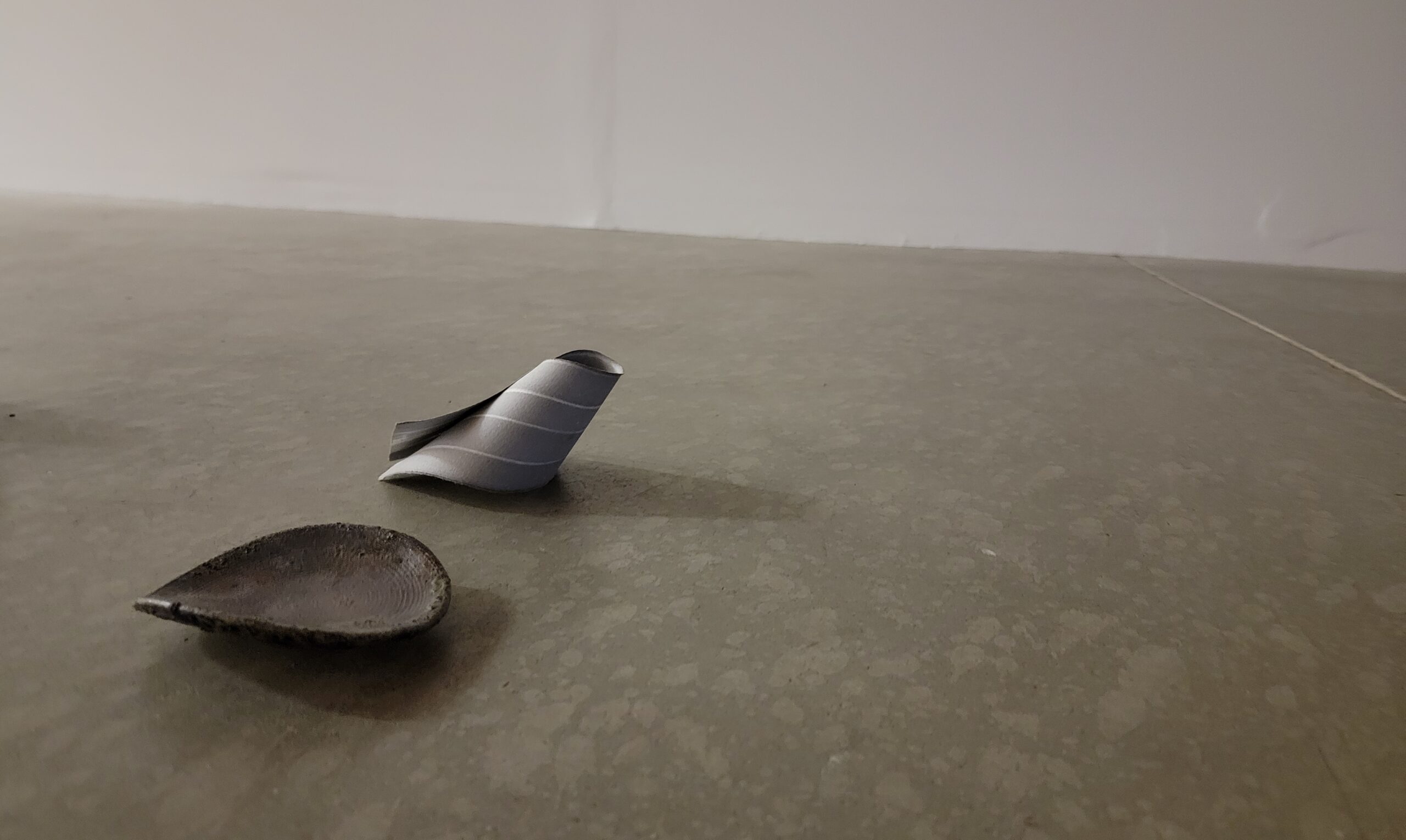How can we consider her, Agnes Martin, as an artist? アグネスはどのような芸術家だと言えるだろうか?My thoughts on this enquiry, at this point, are expressed in my answers to a question kindly thrown by Michael. 現時点での私の見解は、マイケルが投げかけてくれた問いへの答えに記されている。Michael’s gaze in his response is both warm and rigorous. Undoubtedly, ‘able to see freely’. 応答する彼の眼差しは温かくそして厳しく…、まさに「観自在」。 Utako: I would answer YES to “Do you think this ‘transformed’ aspect of Agnes’ persona or psychology relates to her position at the *edge refer to in your notes(1)?”. 「アグネスのペルソナや心理における『変容』という側面は、あなたがメモ(1)のなかで言及した、彼女の立場の『周縁性』と関係があると思いますか?」という貴方の問いに、私はイエスと答えます。 The panelist (‘S’), who spoke about ‘the *edge’ […]
Agencies of bits and pieces
In sharing her humble and stimulating practice in her small room, Linda has recently showed me her works that she describes a “bits and pieces” . They are literally living beings there, which speak something attractive to me eloquently in different tongues. 小さな部屋についての謙虚かつ刺激的な実践を共有してくれるリンダは、「細々としたもの」と言う作品を見せてくれた。それは文字通りそこに生きているもので、それぞれの母語で何やら魅力的なことを私に流暢に話してくれるのだ。 Linda: Anyway, my practice now, which is bits and pieces, inhabits beautifully my “thinking cabin” (ie the extra bedroom); it wants for nothing. It utilizes, even welcomes, my fluctuating capacities and focus and interruptions. And I could not ask for more. いずれにせよ、私の作品――細々したものですが――は「思索のための小屋」(予備の寝室)に美しく収まっています。何の不自由もありません […]
『進藤詩子における陶と土』/ “Clay and Ceramics in Utako Shindo’s Art”
キュレーターで元益子陶芸美術館学芸員の川北裕子さんが、エッセイを寄せてくださった。私が轆轤を挽くきっかけとなったのは、川北さんが企画された加守田章二展を体験し、彼女のやきものに対する視線と思考に触れたことが大きい。(空間を生成するような線をひいてみたい)と思わされた。この「Room 間」を開くにあたり、『川北さんが今お考えのことを自由に書いてください』とお願いした。深謝いたします。Yuko Kawakita, a curator (formerly at the Mashiko Museum of Ceramic Art), kindly contributed an essay. My throwing a wheel was largely triggered by an opportunity to experience her curated exhibition on Kamoda Shōji and to be exposed to her way of thinking/seeing ceramic art. I felt, “I’d like to draw/throw a line that could engender space”. For opening this Room 間, I asked her “please write freely what are in your thoughts”. With a deep bow. (English Translation follows the original Japanese text.) &n […]
Democracy and the Square
ニック・テリーさんはニューヨーク出身の実践者で、20年に渡りテキサス州マーファを拠点に活動している。マーファはドナルド・ジャッドがChinati財団を創設したとても小さな街だ。2019年に現地で出会って以来、言葉やイメージ、音を通して対話を重ねている。彼は、パートナーのマリヤンさんと共に日本に所縁があり、そして熱心な禅道者、画家であり、音の探求者である。そんなニックさんとアグネスについて話すようになったのは、実はごく最近のことである。彼がこの「間 room」に最初に寄せてくれたのは、正方形と民主主義の関係を扱った「序文」と作品であった。Nick Terry is a practitioner, originally from New York and has been based in Marfa, Texas, for 20 years. Marfa is a very small town where Donald Judd created the Chinati Foundation. Since our meeting there in 2019, we have exchanged many words, images and sounds. With his personal association with Japan that he shares with his partner, Maryam, Nick is a committed Zen practitioner, a painter and explorer of sound. It was not u […]
Drawing 間 Ma
この「Room 間」は当然ながらMaである——そう、あの翻訳不可能な Ma。This ‘Room 間’ is, of course, Ma space-time ——yes, that untranslatable Ma. 友人マイケル・ディアスは彼のスタジオで、そして私は小さなスペースで、それぞれにドローイングをて、同様に翻訳不可能性を見出している。それが我々の語り合いの根底にある。My friend, Michael Diaz draws in a studio, and I draw in a small space, and commonly find the untranslatability in what we do. That is the basis of our dialogue. Utako: The attached are pages that introduced me to the study of Zen about 10 years ago; at that time, as part of a more philosophical investigation rather than a spiritual one. The title of the book, and the way it’s written would indicate that. Yet, the spring is almost here, I feel like sharing it with you! 10年前に、私が禅を学ぶき […]
